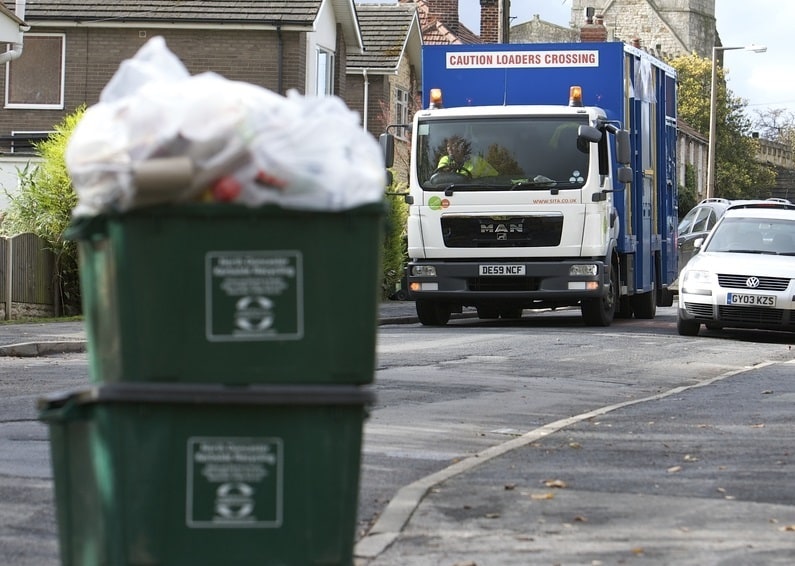The UK could meet the overall recycling rates required under the Circular Economy proposals, but it will be difficult and costly for both local authorities and the commercial sector, a report by the ESA has found.
The news comes in the first of two new reports, launched today, looking at what it will take to meet the recycling targets proposed by the EU Circular Economy Package.

Meeting the recycling targets will be challenging and costly for both councils and the commercial sector, finds ESA report (Picture: Shaun Flannery)
Targets
The report, ‘An economic assessment and feasibility study of how the UK could meet the Circular Economy Package recycling targets’, written by Ricardo Energy and Environment, covers a wide range of topics and issues.
It follows the announcement earlier this week, that the EU Council has adopted the Circular Economy package, which sets binding recycling targets, including 55% of municipal waste recycled by 2025, and 65% by 2035 (see letsrecycle.com story).
ESA estimates that to reach 65% the additional cost to local authorities could be in the region of £105 to £315m per annum and £160m per annum to the commercial sector.
And, the ESA says this is only possible in the event that government introduces policy to strengthen end markets for the use of recycled materials. One such solution could be reform of extended producer responsibility.
PRN
ESA’s executive director, Jacob Hayler, has pointed to the PRN system as a way of supporting council collections costs. Speaking to letsrecycle.com Mr Hayler said: “The PRN system is estimated to cover only 10% of the costs of collecting and sorting packaging waste for recycling. This contribution has to rise as part of any PRN reforms. Councils are struggling enough as it is and, as recycling costs rise, producers must shoulder a fairer portion of the burden.”
In its report, the ESA suggests that councils can make cost savings through reduced frequency of waste collections, which can then be reinvested into the system.
ESA predicts that if local authorities move towards reduced frequency of residual waste collections and food waste and commercial recycling reaches 60% an overall recycling rate of 56% could be achieved by 2030.
This compares to a “business as usual” scenario which will allow England to achieve an overall recycling rate of 52%.

The Circular Economy package, adopted by the European Council this week, includes a recycling target of 55% by 2025
However, ESA suggests: “Services will need investment to just standstill in the future and the adoption of high recycling targets should be fully evaluated to understand both the cost and environmental performance.”
According to the report, approximately 80 – 85% of material in household waste is recyclable. To achieve a 60% recycling rate residents would need to capture at least 70% of their recyclables, consistently, every week particularly the heavier material streams such as food and garden waste, it says.
“Contamination, inconsistencies within materials collected across authorities, and current levels of participation by residents would make this recycling rate almost impossible without increased investment and significant behaviour change,” ESA says.
ESA points to government policy revisions, such as Extended Producer Responsibility (EPR) and review of the Producer Responsibility Obligations (Packaging Waste) Regulations 2007, and consideration of a Deposit Return Scheme and/or alternatives, as measures which could improve recycles rates.
However, the Association says these policy revisions cannot be guaranteed and the associated performance or challenges for many of them will need to be explored further. “Some may even have a detrimental effect on recycling rate,” ESA claims.
Funding
“Current policy delivers current outcomes. If we want higher recycling rates then we will need fresh interventions and additional funding.”
Jacob Hayler
ESA
Commenting on the report launch, Jacob Hayler said: “The UK is struggling to meet the EU’s existing targets for 50% household recycling. This is largely due to a historic lack of funding and policy support in England – particularly on end-markets for recyclates – essential to driving recycling rates higher.
“Current policy delivers current outcomes. If we want higher recycling rates then we will need fresh interventions and additional funding.
“In all scenarios there will be a need to manage waste that cannot be practically or economically recycled – this black bag waste is estimated to be as much as 9.5 million tonnes by 2030, – that’s enough waste to fill Wembley stadium over 9 times right up to the roof! Currently this waste is turned into energy which is a good outcome – but much is still landfilled.”
Weight
The second report by ESA, yet to be published, will look at alternative metrics to weight-based recycling targets. It will look at how to recycle “smarter” by focussing on the materials that do the “most damage”.
The post ESA: Meeting EU recycling targets ‘challenging’ appeared first on letsrecycle.com.
Source: letsrecycle.com General



